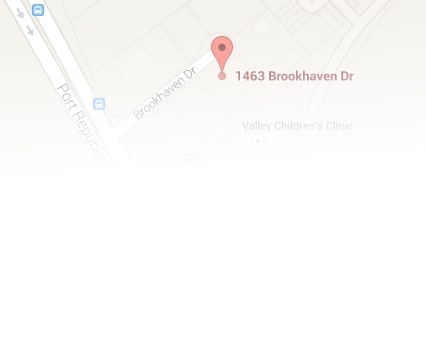There are significant numbers of properties that do not enjoy direct frontage to a public right‐or‐way or a deeded easement. Obviously, this is a serious problem since without legal access rights there may be no meaningful ability to use or enjoy such property. Although this problem is serious, it may not be terminal and this article represents the author’s attempt to provide some general information that may be helpful to the understanding of the average layperson as to how access may be established.
How does property get land‐locked?
There are a variety of reasons why there are many pieces of property that apparently lack access. What we have found is that many of these “land locked” parcels were divided off from larger parcels many years ago when there may have been roads or paths which have long become overgrown and essentially disappeared. Sometimes the divisions were to family members and no thought was given to the possibility that one day there might be a problem with access. In many cases there is still a road or driveway that has been, or is being, used, although there is no deed or grant which conveyed the right to use the road.
What can be done to establish access?
For a legal consultation with a personal injury lawyer, call (434) 817-3100
For owners of property which is without frontage of deeded access to a public right‐of‐way there are a variety of options which may be available depending on the particular circumstances. The first and best option is generally to attempt to establish recorded access by agreement with your neighbors. This option, if possible, saves considerable time and money and encourages important neighborly relations. If your neighbors are agreeable to allowing an easement granting access, then you will need the assistance of an attorney to draft and record the easement as well as the services of a land surveyor to measure and furnish the metes and bounds description of the right‐of‐way. An additional consideration is whether a road maintenance agreement would be of value. A road maintenance agreement basically specifies who is responsible for maintenance and repair of the road.
In the event you are unable to work out an access agreement with your neighbor(s), you will need to determine whether or not there is a basis under the law to impose access. As with most legal matters, usually one starts with the facts and then one proceeds to apply the law. Depending on the facts there are different legal principles and remedies which may provide a basis for establishing access. The relevant facts to focus on concern the physical realities of the property on the one hand and the title history on the other. The help of an experienced attorney may be of critical importance in gathering the necessary information.
Physical/on‐the‐ground facts. The most important physical characteristic is, not surprisingly, the existence of a road that connects the property to a public right‐of‐way. Many properties without road frontage or deeded access have old roads that connect them physically to a public right of way. Sometimes these roads have been out of use for many years and are largely overgrown and in disrepair. If there is evidence on the ground of a road or pathway, then additional information concerning the road should be obtained. Typically this information is derived from persons, generally elders, who have knowledge of the history of the property. Important information includes whether the previous owner of the land‐locked property used the road to access the property. Was the road in existence at the time the subject property was parceled out of a larger tract? What other parcels does the road traverse on its way to a public highway?
Other “on the ground” facts to investigate include whether there were improvements on the parcel. Sometimes there may be remnants of a dwelling that was once occupied. Obviously, if there was a dwelling on the property the people who lived there must have accessed it somehow. If the remnants of an old dwelling can be located, then gathering information from long-time residents may be helpful. Such information would include who occupied the dwelling, when it was last occupied, and how did they access the public road.
Click to contact personal injury lawyers today
One is not limited to actual physical inspection of the property as the only means to determine whether there was previously a road or improvements on the property. Some local government departments (e.g., real property taxation) have, in the past, used aerial photographs of properties in their jurisdiction, typically for their tax maps. Those photos/tax maps may be viewable and sometimes they may show a dwelling or road that is either no longer visible, or difficult to locate without some help.
Title history facts. As important, if not more so, than the physical features of the land is the title history. Here the inquiry is analogous to a genealogy that one might do on a particular person. Instead of tracing back ancestors, one traces back the conveyances that brought the property to its current ownership. Generally speaking most modern day parcels resulted from the subdividing of larger parcels over the years. The task in gathering the title history that may be relevant on access is to trace the title for your property back as far as necessary to the point where it was part of the same tract of land as your neighbor’s lands.
Complete a Case Evaluation form now
Ideally, you are trying to find a point in time where the land you now own and the property that separates your property from a public right‐of‐way were all part of the same parcel. Other important information that can be found in the title history is sometimes found in old plats. Plats are survey diagrams prepared to show the boundaries of properties being conveyed. Often the plats are referred to in the deed which conveys the property.
Examination of the plats of property in your chain of title (they are usually recorded along with the first deed that refers to them), and sometimes in the chain of title of adjoining property, may disclose old roads. Sometimes the old roads shown on such plats were located such that they could have provided access to the property you now own.
How does the law provide the means to establish access rights to land‐locked property?
Land which is without access is of little use or value. Not surprisingly, the law provides certain means by which access can be established to property that does not front a public right‐of‐way.
Implied easements. Implied easements are easements that the law implies where otherwise there would be no access to the property. These are also commonly referred to as easements by necessity. These easements are “implied” by the law under certain circumstances. The general categories of these implied easements are easements by implied grant, implied reservation, implied by prior use.
Easement of necessity by implied grant. The easement of necessity by implied grant operates under the principle that when one conveys property one intends to convey all that is necessary for the reasonable use and enjoyment of the property. Otherwise, the grant would be useless. In order to establish this type of easement one would need to prove 1) that one’s property is without access to a public right‐of‐way (necessity); 2) that one’s property was at one time part of a larger parcel which had access (most commonly frontage) to a public road; and 3) that the property through which one seeks to establish an easement was once part of that same larger parcel.
Easement of necessity by implied reservation.The easement of necessity by implied reservation is similar to the easement of necessity by implied grant only insofar as the property must at one time have been part of a larger parcel, a portion of which access is now sought to be established. The principles operating for this type of easement are entirely different than those of the preceding one. Where the easement by implied grant operates under the principle that the grantor intends to pass along everything necessary to the use of the property being conveyed, the easement by implied reservation involves the opposite considerations. Here the circumstances involve the grantor retaining a parcel which is land‐locked and conveying a parcel which has access. The principal that forms the basis for the easement by implied grant – that the grantor cannot negate his own grant – clearly does not apply to this situation. In fact, the very opposite considerations apply for in order for there to be established access the effect would be that the grantor would be negating the grant to some extent.
Since the principles are radically different, so too are the elements that must be proven. Here not only must unity of title (that the current parcel was at one time part of a larger parcel which had access) be established but one must also show: 1) that at the time of the severance (division from the larger parcel) there was in existence a road or way of access; and 2) that this way was and continued to be in use. The basic principle here is that there is notice to all that there is an appurtenance (attribute) of the property in the form of a road.
Prescriptive easements. Another way to establish access to property is by means of a prescriptive easement. A prescriptive easement operates under the presumption of a grant that arises after a long, continuous, adverse, open use of a right‐of‐way over someone else’s property. The benefit of this type of easement is that it is not limited to lands which were formerly part of the same grant. The disadvantage is that it is usually not that common. In Virginia the period of time that the road must have been openly and adversely used is 20 years. Sometimes there may be the proper period of use, but the use may have been permissive. A common example of this is where the owner of the land has given permission to use the road. If that occurs then the running of the statutory fifteen year period is tolled. Another circumstance which may affect the claim is where the user of the road mistakenly believed he had the right to use the road. There is some authority in Virginia that such intent may fail to satisfy the requirement that the use be “hostile.”
Conclusion.
There are a number of means by which one can establish access to property that appears to be land‐locked. Each involves its own particular facts and legal principles. With the help of competent legal counsel and under the proper circumstances access which will make a huge difference in the value of property can often be established.
For more information about this topic or other real estate disputes, please contact John Simpson at 434-817-3100. Or, for information about other areas of practice, please visit our website at www.martinwrenlaw.com.
Call (434) 817-3100 or complete a Case Evaluation form



